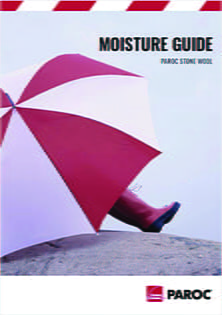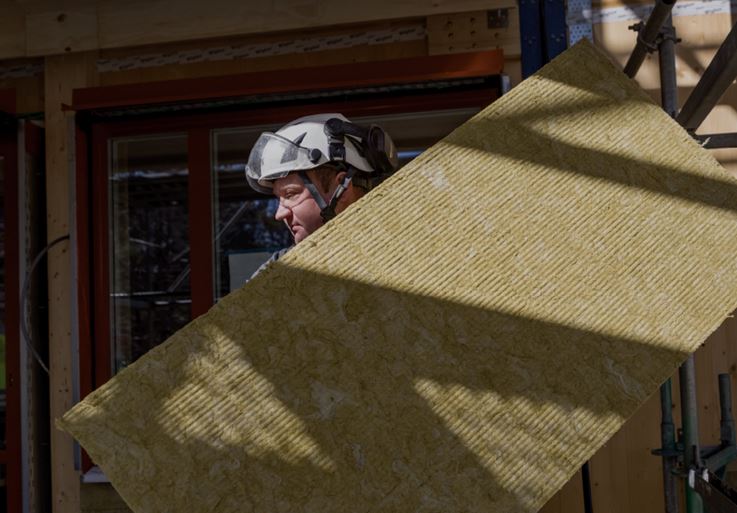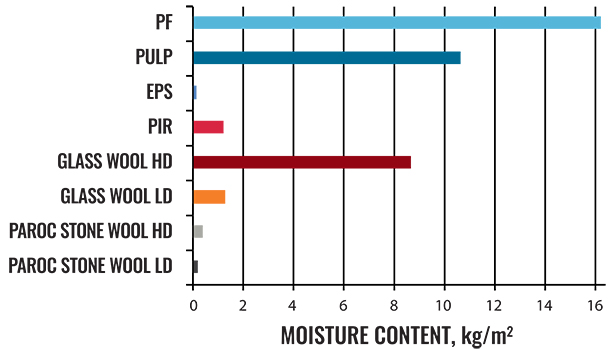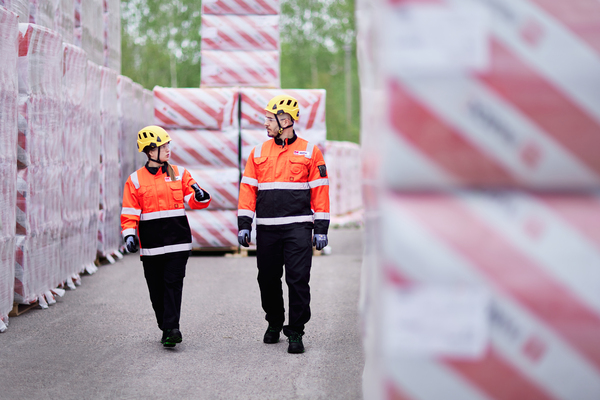


Paroc stone wool is, from a moisture technical perspective, one of the best insulation materials thanks to its versatile properties. Our trust in the excellent performance of stone wool is based on long experience as well as comprehensive tests and simulations performed by impartial research institutions and laboratories.
In the construction stage, the most important properties of the heat insulation is a low absorption of water and quick drying. A comprehensive study concerning heat insulation materials conducted by VTT (VTT-S-05337-17) has shown that there are differences between different insulation materials when it comes to moisture technical properties.

Most construction materials contain water, which needs to be able to escape the structures as quickly as possible already during the construction stage. How much moisture rain or humid air adds to the structures during the construction stage varies greatly between different materials. Even if the insulation does not get wet, the moisture level of the rest of the materials increases.
For this reason, the water vapour permeability of the insulation plays a key role when it comes to the drying time of the whole structure – insulation with high water vapour permeability allows moisture from the structures to escape in two directions.

Mould is present everywhere – in the air and on almost all outdoor surfaces. Mould spores enter buildings for example through windows.
Mould starts growing if the relative humidity is high (≥ RH80 - 85%), the temperature is higher than 10 °C and there is sufficient organic materials to provide nutrients for the mould. If one of these conditions is not met, the mould will not grow.
Stone wool insulation is made from non-organic stone and provides no nutrients for mould. Paroc has commissioned mould tests for their stone wool in an impartial laboratory. The tests were conducted in a relative humidity of 95–100% and a temperature of 22 °C, using the most common types of mould.

A comprehensive study conducted by VTT has shown that there are differences between different insulation materials when it comes to moisture technical properties. According to the study Paroc stone wool:
